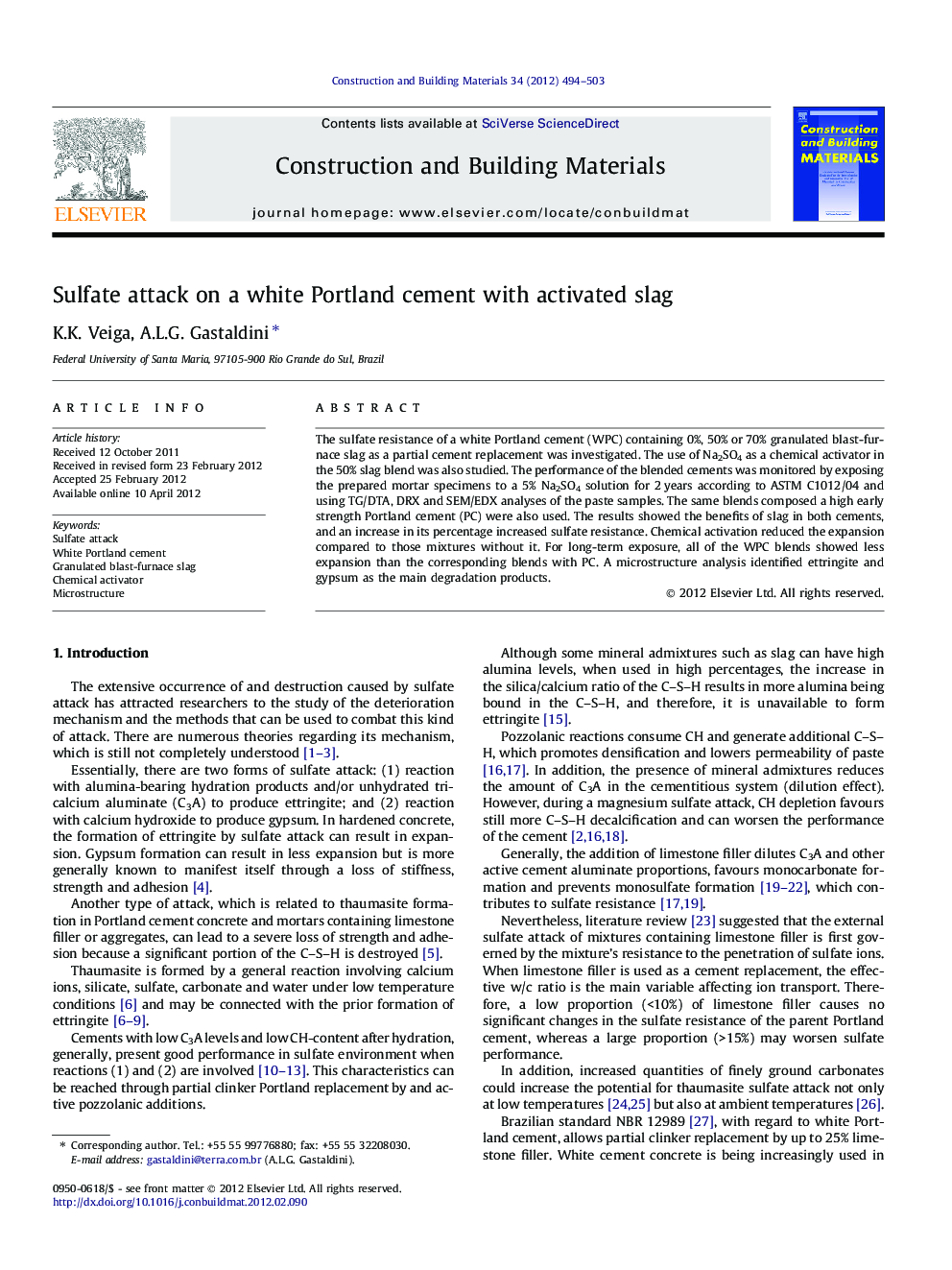| Article ID | Journal | Published Year | Pages | File Type |
|---|---|---|---|---|
| 259020 | Construction and Building Materials | 2012 | 10 Pages |
The sulfate resistance of a white Portland cement (WPC) containing 0%, 50% or 70% granulated blast-furnace slag as a partial cement replacement was investigated. The use of Na2SO4 as a chemical activator in the 50% slag blend was also studied. The performance of the blended cements was monitored by exposing the prepared mortar specimens to a 5% Na2SO4 solution for 2 years according to ASTM C1012/04 and using TG/DTA, DRX and SEM/EDX analyses of the paste samples. The same blends composed a high early strength Portland cement (PC) were also used. The results showed the benefits of slag in both cements, and an increase in its percentage increased sulfate resistance. Chemical activation reduced the expansion compared to those mixtures without it. For long-term exposure, all of the WPC blends showed less expansion than the corresponding blends with PC. A microstructure analysis identified ettringite and gypsum as the main degradation products.
► White Portland cement exhibited better resistance to sodium sulfate attack. ► THE slag substantially improved the resistance to sulfate attack. ► Chemical activation improved the resistance of the 50% slag blend to sulfate attack. ► The main degradation products found were ettringite and gypsum.
